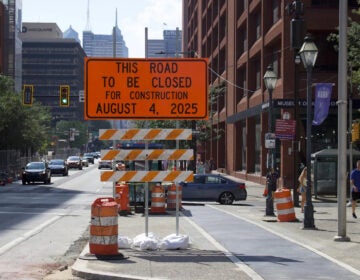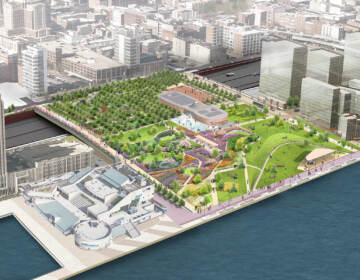Weekly Press: Talks on Riverfront Redevelopment Ring in the New Year
Weekly Press: Talks on Riverfront Redevelopment Ring in the New Year
This month’s Society Hill Civic Association meeting attracted community associations from surrounding river wards, such as those in Pennsport and Queen Village, last Wednesday, January 20th.
The big draw:
The seven mile stretch of land from Allegheny to Oregon Avenues on the Delaware Riverfront. It is slated for redevelopment; representatives from the Central Delaware Advisory Group (CDAG) and the Delaware River Waterfront Corporation (DRWC) explained the project’s origin, and its present and future status, to the approximately one hundred residents in attendance.
“The Delaware River gave birth to this city,” said Renee Goodwin of CDAG. “It allowed settlers to import and export goods,” she explained, adding that its ports continued to grow through World War II. “But by the 1960s things had begun to change, including the ports, though they are still important.”
As the riverfront’s usage for importing and exporting declined, developers, recognizing the value of the land, began to purchase it, Goodwin explained. Since then, added Goodwin, “there have been several plans to develop it but nothing has happened.”
Until 2006, that is. That’s when then-Mayor Street asked Penn Praxis, which included a forty six-member group of stakeholders, comprised of civic associations and non-profits, to develop a plan. Collecting input from over 4,000 residents, Penn Praxis created the Delaware River Front’s Action Plan 2008-2018. The plan was then adopted by the Nutter Administration and approved by the Planning Commission.
CDAG’s Vice Chair, Matt Rueben, stressed the importance for residents to work with respective civic groups in order to offer input towards the riverfront’s redevelopment by contributing to its Master Plan.
The time line for the riverfront’s Master Plan over the next year is as follows: from now until March 2010 will entail collecting data and analyzing the existing condition; April through August of 2010 will entail planning and concept development, which will include studying land use, zoning, trails, public use, open space, and development. Then from September through December, details of the Master Plan will be refined before going to the Planning Commission for final adoption by February 2011.
When planning the riverfront’s redevelopment, its stakeholders will consider the following: How to guarantee public access to the river’s edge; what makes it easier for residents to walk and bike to river; which key streets should be extended to the river; how to create a greenway; where exactly the greenway should be; who builds the trails; and who maintains them.
Once the Master Plan is finalized, however, many of its facets won’t be evident for years to come. Other projects, such as transforming Pier 53 in South Philadelphia to an interim open green space, should be completed by this coming summer, explained Marilyn Jordan Taylor. Taylor, who Chairs the DRWC and is Dean of the University of Pennsylvania’s School of Design, presented an overview of the project’s objectives.
Because the riverfront’s redesign remains in the planning stages, little has been finalized, though a plan is underway to fully develop Pier 11 at Race Street as a riverfront park within the next few years.
Cooper, Robertson and Partners has also been selected to oversee the riverfront’s design, Taylor continued, explaining that this firm was selected “based on their extensive relevant work developing riverfronts in other cities such as the Boston Seaport plan, the Memphis Riverfront Plan and Battery Park City, which has been under development since the 1980s.”
“The project area is huge, and yet it only represents a small portion of center city,” continued Taylor, explaining that one of the goals of the Master Plan is to strike a balance between “the neighborhoods immediately surrounding it, while taking into account the entire city and surrounding region and the development’s impact on improving the city’s tourism.”
Striking that balance, especially when taking into consideration the fact that much of the land being redesigned is privately owned, caused concern for some attending last week’s meeting.
Jeff Rush, president of Queen Village Neighborhood Association, claimed that “other commercial interests owned ninety five percent of land” along the waterfront.”
Continued Rush, “And two casinos will be built within two and a half miles of one another; I’m wondering how the public vision will agree with private interest?”
According to Taylor, “with Sugarhouse, we’re already involved, working with the planning commission to make sure that everything is built there along very clear guidelines.”
As for the Foxwoods Casinos, “I think that we’re a long way from the point where that plan’s getting off the ground, but when and if it does, we’ll be involved in that as well.”
For more information on the project’s plans, timelines or community meeting schedules, visit www.delawareriverwaterfrontcorp.com.
WHYY is your source for fact-based, in-depth journalism and information. As a nonprofit organization, we rely on financial support from readers like you. Please give today.






